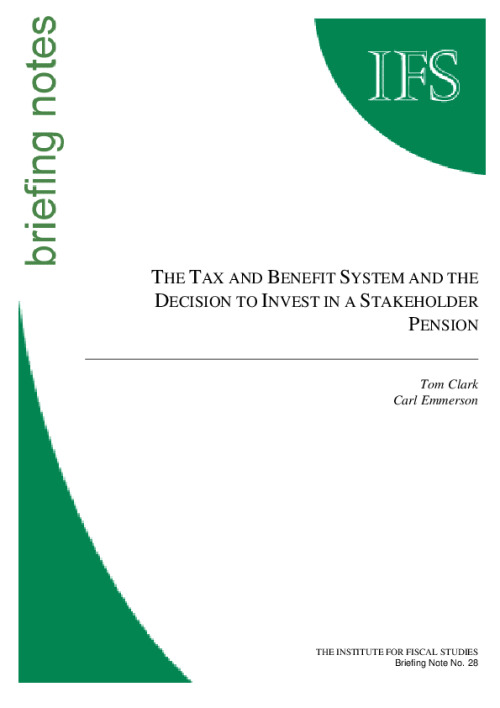We start with a brief review of the nature and aim of stakeholder pensions. We go on to review how the tax treatment of stakeholder schemes compares with that of the other principal tax-privileged way to invest in financial assets, the Individual Savings Account (ISA). As we explain, individuals who expect to be saving moderate amounts for the foreseeable future may well face a difficult decision in deciding between these two vehicles. For example, they might be best served by initially placing funds in an ISA and subsequently transferring these funds into a pension as they near retirement. Next, we turn to the benefit system. We provide an overview of its structure in the wake of Labourҳ reforms and review how it treats different forms of financial assets. We then determine the specific groups for which the benefit system is especially likely to exert a major influence on the appropriate form in which to save for retirement and, indeed, whether to save at all.
Taken as given in all this is the current tax and benefit system, along with the current governmentҳ aspirations for how this will evolve over time. One important consideration for people will be that, in reality, governments' policies have tended to change over time. The final section briefly discusses the important issue of whether current policies, such as increasing the basic state pension in line with prices while increasing the minimum income guarantee (and eventually the pension credit) in line with earnings, may or may not prove to be politically sustainable.











